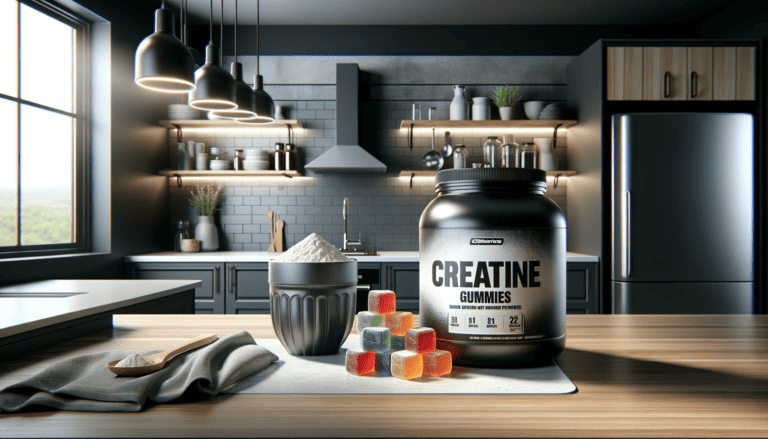How to Lose Face Fat: Science-Backed Methods
Understanding the science can help you learn how to lose face fat and employing proven methods can help achieve a leaner facial profile, but the journey toward a slimmer face isn’t just about aesthetics; it’s also about adopting a healthier lifestyle.
Table of Contents
Understanding How to Lose Face Fat
Various factors, including genetics, age, and lifestyle influence the distribution of facial fat. Fat accumulation in the face differs from person to person due to unique genetic predispositions and lifestyle choices. Exploring the biology behind facial fat sheds light on why some individuals may experience more pronounced fat deposits in their faces than others.
Studies have shown that facial fat distribution is regulated by genetic and hormonal factors. For instance, hormones like cortisol, insulin, and estrogen play roles in fat storage patterns, impacting where and how fat accumulates on the face. Additionally, the aging process affects facial fat distribution, leading to changes in facial volume and contours.
Understanding the science of facial fat storage and metabolism is vital in devising effective strategies for reducing face fat. Research into fat metabolism elucidates the mechanisms by which the body stores and utilizes fat in different regions, offering insights into targeted interventions.
Scientific investigations into facial fat distribution provide valuable knowledge for understanding how to lose face fat.
Some ways that are proven to reduce fat deposits in the body overall may also prove effective in reducing fat deposits in the face.
Healthy Eating Habits:
Caloric Deficit and Overall Weight Loss
Establishing a caloric deficit is fundamental for weight loss, encompassing reduction in facial fat. When the body expends more energy than it consumes, it taps into stored fat for fuel, resulting in weight loss throughout the body, including the face.
A balanced diet contributes to achieving this deficit by ensuring nutrient-rich meals within an appropriate calorie range. Emphasizing nutrient-dense foods while moderating calorie intake aids in reducing overall body fat, including areas prone to fat accumulation, such as the face.
Creating a caloric deficit through balanced nutrition involves mindful portion control, focusing on whole foods rich in essential nutrients, and avoiding excessive intake of processed or high-calorie items. This approach not only supports weight loss but also ensures the body receives adequate nutrition for optimal health, influencing facial fat reduction in the process.
Nutrient-Rich Diet
A balanced diet comprising fruits, vegetables, lean proteins, and healthy fats holds immense importance not just for overall health but also for reducing facial fat. These nutrient-rich foods offer a spectrum of vitamins, minerals, antioxidants, and essential fatty acids vital for optimal bodily functions, including skin health and fat metabolism.
Fruits and vegetables are packed with antioxidants that combat oxidative stress, supporting skin elasticity and reducing puffiness in the face. Lean proteins aid in muscle maintenance and repair, contributing to a toned facial appearance by enhancing muscle definition.
Incorporating healthy fats, such as those found in avocados or nuts, supports skin hydration and suppleness, potentially diminishing the appearance of facial bloating.
A diet rich in these elements not only nurtures the body but also influences facial fat reduction by providing the necessary nutrients to support metabolic processes and overall skin health.
Excess Sodium and Processed Foods
High sodium intake, often linked to processed and packaged foods, can contribute to water retention in the body, leading to facial puffiness. Sodium disrupts the fluid balance, causing cells to retain water, which can manifest as bloating, especially in the face.
Processed foods, known for their high sodium content and often containing additives and preservatives, exacerbate this effect. These foods not only elevate sodium levels but also lack the essential nutrients found in whole, unprocessed foods.
Reducing sodium intake and minimizing processed food consumption helps restore the body’s fluid balance, potentially alleviating facial puffiness. Opting for fresh, whole foods not only decreases sodium intake but also provides essential nutrients that support skin health and a more balanced fluid distribution throughout the body, contributing to a less bloated facial appearance.
Hydration for Skin Health
Proper hydration plays a pivotal role in maintaining skin elasticity and combating facial bloating. Adequate water intake ensures that skin cells remain hydrated, promoting plumpness and elasticity. This contributes to a more youthful and vibrant appearance while potentially reducing the appearance of facial puffiness.
Scientific studies consistently highlight the correlation between hydration and skin health. Research demonstrates that optimal hydration levels positively impact skin elasticity, moisture retention, and overall skin appearance. Studies have shown that individuals who maintain adequate hydration levels tend to have better skin elasticity, which can mitigate the appearance of facial puffiness and promote a smoother complexion.
Furthermore, proper hydration supports the body’s natural detoxification processes, aiding in the elimination of toxins that may contribute to facial bloating. While water alone may not directly target facial fat, its influence on skin health indirectly contributes to a more toned and less bloated facial appearance.
Incorporating ample water intake as part of a daily routine serves as an essential aspect of maintaining healthy skin and potentially reducing facial bloating and puffiness.
Facial Exercises for Toning
Although spot reduction specifically for facial fat isn’t scientifically supported, facial exercises can strengthen and tone facial muscles, contributing to a more defined and lifted appearance. These exercises focus on enhancing muscle firmness and improving circulation in the face.
One effective exercise involves cheek lifts: Smile widely while pressing your fingertips gently against your cheeks. Lift the cheek muscles upward, resisting the pressure of your fingertips, and hold for a few seconds. Repeat this several times to engage and strengthen the cheek muscles.
Jaw movements, such as chewing gum or pretending to chew while keeping the lips closed, help activate the jawline muscles, potentially enhancing jaw definition.
Neck stretches also aid in toning facial muscles. Tilt your head back gently, and while keeping your lips closed, make a chewing motion. This exercise targets the muscles under the chin and along the neck, helping to tighten and tone them.
While these exercises may not directly reduce facial fat, they promote muscle tone, which can contribute to a more sculpted and defined facial appearance. Incorporating these exercises into a regular skincare routine may enhance facial muscle strength and appearance over time.
Cardiovascular Exercises for Fat Loss
Cardio exercises, known for their ability to elevate heart rate and increase calorie expenditure, play a crucial role in overall fat loss, which extends to reducing facial fat. Activities like running, swimming, cycling, or brisk walking engage large muscle groups, prompting the body to utilize stored fat as an energy source.
Engaging in cardio workouts elevates metabolism, leading to increased energy expenditure during and even after exercise. This process, known as excess post-exercise oxygen consumption (EPOC), allows the body to continue burning calories post-workout, contributing to overall fat reduction, including potential facial fat loss over time.
Moreover, cardio exercises promote a caloric deficit, a key factor in fat loss, by burning more calories than consumed. This deficit prompts the body to tap into fat stores for energy, impacting fat distribution across the body, including the face.
Consistent participation in cardio exercises, combined with a balanced diet, can help achieve sustainable fat loss throughout the body, potentially leading to a leaner facial appearance over time.
Sleep, Stress, and Facial Fat
Inadequate sleep and high-stress levels can significantly impact facial appearance, contributing to facial bloating and potential fat retention. Poor sleep patterns disrupt hormone regulation, specifically increasing cortisol levels. Elevated cortisol not only triggers stress but also promotes fat storage, potentially leading to facial puffiness and bloating.
Moreover, lack of sleep affects the body’s ability to repair and regenerate, hindering cellular functions, including those related to skin health. This can result in reduced skin elasticity and increased water retention in facial tissues, exacerbating the appearance of puffiness.
Managing stress effectively is crucial. Chronic stress leads to sustained high cortisol levels, impacting fat distribution and potentially causing facial bloating. Techniques like mindfulness, meditation, or yoga can help reduce stress, thereby mitigating its effects on facial appearance.
Improving sleep quality is equally vital. Establishing a consistent sleep schedule, creating a relaxing bedtime routine, and optimizing the sleep environment—keeping it dark, quiet, and comfortable—promote better sleep.
By prioritizing quality sleep and managing stress levels effectively, individuals can positively influence facial appearance by reducing bloating and potential fat retention.
Bonus: Facial Massages
Research on facial massages and gua sha as potential tools for improving facial appearance is ongoing. While not conclusive, incorporating them into your routine alongside the listed strategies may offer additional benefits.
Scientific References for Validating Strategies
Each strategy discussed in the blog is substantiated by scientific studies or articles to validate its effectiveness in reducing facial fat.
Research by Yanovski and Yanovski in the New England Journal of Medicine (2014) highlights the significance of caloric deficit in overall weight loss, elucidating its impact on reducing fat, including in facial regions. Similarly, a study published in Nutrients by Gwinup in 1971 discusses how nutrient-rich diets aid in weight management, potentially influencing facial fat reduction.
Moreover, studies by Palma et al. in the Journal of Clinical & Aesthetic Dermatology (2015) demonstrate the correlation between hydration and skin health, emphasizing its role in maintaining elasticity and reducing facial puffiness.
Regarding facial exercises, a study in the Aesthetic Surgery Journal by Alam et al. (2018) suggests that while spot reduction isn’t guaranteed, facial exercises contribute to muscle toning, potentially impacting facial appearance positively over time.
This site does not provide medical advice, diagnosis, or treatment. Any information published on this website or by this brand is not intended as a substitute for medical advice, and you should not take any action before consulting with a healthcare professional.

